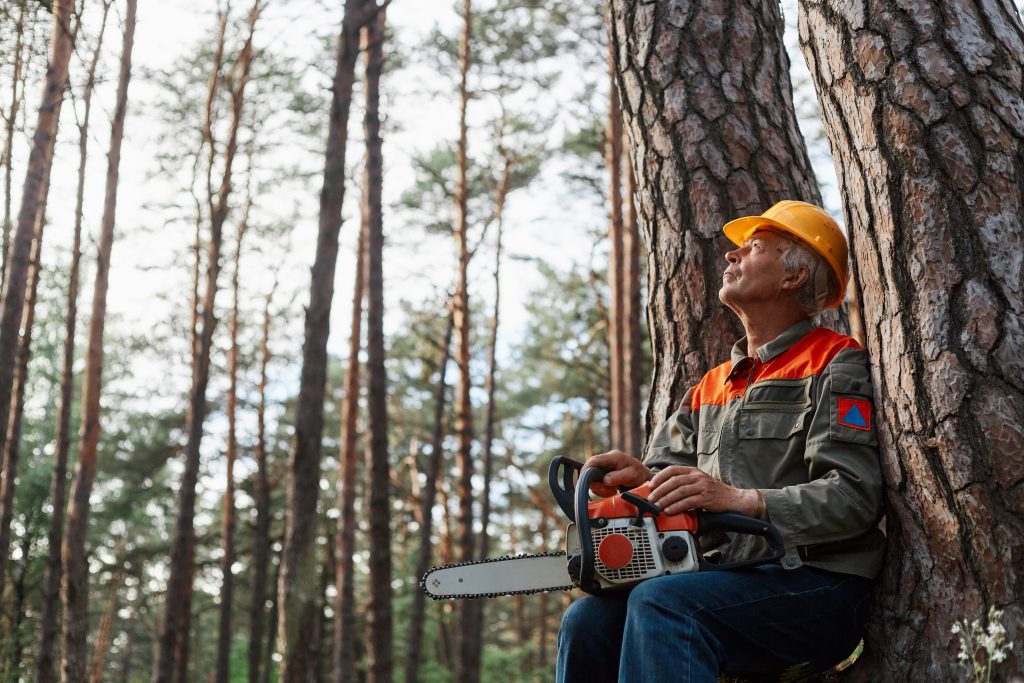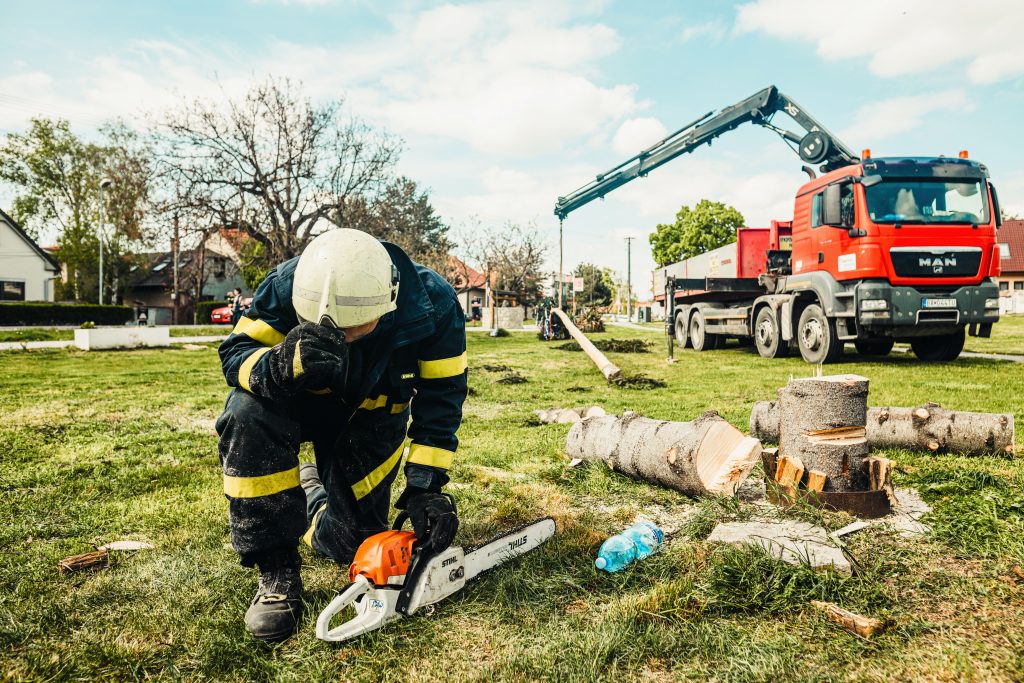ENCOURAGING COMMUNITY INVOLVEMENT IN URBAN FORESTRY
ENCOURAGING COMMUNITY INVOLVEMENT IN URBAN FORESTRY
Encouraging community involvement in urban forestry refers to the process of engaging residents, local organizations, schools, businesses, and other community members in activities related to the care, maintenance, and expansion of urban trees and green spaces. It encompasses a wide range of collaborative efforts aimed at improving the health, diversity, and sustainability of urban forests within cities and towns.

Urban forestry involves the management of trees and vegetation in urban areas to maximize their benefits for both the environment and the community. It addresses challenges such as air quality improvement, temperature regulation, stormwater management, biodiversity enhancement, and overall urban livability. Community involvement in urban forestry recognizes that the success of these efforts depends on the active participation of local residents and stakeholders.
The idea behind encouraging community involvement in urban forestry is to foster a sense of ownership, stewardship, and connection between people and the natural environment in their urban surroundings. It acknowledges that the collective efforts of individuals can have a profound impact on the health and sustainability of urban ecosystems.
Community involvement can take various forms:
- Tree Planting and Care: Organizing tree planting events where community members come together to plant trees in parks, streets, and other public spaces. Ongoing care, such as watering and mulching, is also part of the process.
- Advocacy and Education: Community members can raise awareness about the benefits of trees and advocate for tree-friendly policies, influencing urban planning decisions. Education initiatives can inform the public about the importance of proper tree care and its positive effects on the environment.
- Data Collection and Monitoring: Engaging citizens in tree inventory and health assessments helps gather valuable data about the urban forest. This information guides informed decision-making for tree management.
- Green Space Creation: Collaborating to establish community gardens, urban farms, and green spaces contributes to enhancing the urban environment and fostering a sense of community.
- Beautification and Restoration: Involvement in projects that focus on improving the aesthetic quality and ecological health of neighborhoods through tree planting, landscape enhancement, and restoration activities.
Encouraging community involvement in urban forestry has several benefits. It fosters a shared responsibility for the urban environment, strengthens social bonds within communities, provides educational opportunities, and creates a sense of pride in contributing to a greener, healthier city. Furthermore, community-driven initiatives tend to have a more lasting and sustainable impact, as the local population becomes directly invested in the well-being of their surroundings.
Overall, community involvement is a crucial element in promoting a sustainable and vibrant urban forest that enriches the lives of residents and contributes to the long-term ecological health of urban areas.
Importance Of Fostering Community Engagement For A Healthier Urban Forest
Fostering community engagement for a healthier urban forest is of paramount importance for several compelling reasons. A thriving urban forest not only benefits the environment but also enhances the quality of life for residents and contributes to the overall well-being of cities and towns. Here’s why community engagement is essential for creating and maintaining a healthier urban forest:

- Shared Responsibility: Involving community members in urban forestry creates a sense of shared responsibility for the environment. When residents actively participate in tree planting, care, and maintenance, they take ownership of their urban surroundings and become stewards of their local green spaces.
- Increased Awareness: Community engagement efforts raise awareness about the value of trees in urban areas. Educating residents about the benefits of trees, such as air purification, temperature regulation, and stormwater management, helps them understand the significance of maintaining a healthy urban forest.
- Partnership in Decision-Making: Engaged communities have a voice in shaping urban development plans and policies that affect the urban forest. Community input can influence decisions related to tree preservation, planting, and landscaping, ensuring that the interests of local residents are considered.
- Educational Opportunities: Community engagement provides educational platforms for residents to learn about proper tree care techniques, tree species identification, and the ecological importance of urban forests. This knowledge empowers residents to contribute to the well-being of trees and the environment.
- Sense of Identity: A healthier urban forest contributes to the character and identity of a community. Engaged residents often take pride in the beauty of their local trees and green spaces, which can enhance community pride and cohesion.
- Social Interaction: Urban forestry activities bring community members together, fostering social interaction and building relationships among neighbors. Planting and caring for trees as a group creates a sense of camaraderie and unity.
- Positive Impact on Health: A healthier urban forest can lead to improved air quality, reduced noise pollution, and increased access to green spaces. These factors contribute to better physical and mental well-being for residents.
- Climate Resilience: A community engaged in urban forestry is better equipped to address the challenges posed by climate change. Trees help mitigate the urban heat island effect, absorb carbon dioxide, and provide shade, making cities more resilient to changing weather patterns.
- Long-Term Sustainability: Community involvement ensures the continuity of urban forestry efforts. When residents are actively engaged, there is a higher likelihood of ongoing care, maintenance, and advocacy for trees, leading to a lasting positive impact.
- Economic Value: A healthier urban forest can increase property values, attract businesses, and stimulate tourism. Engaging in tree-related activities contributes to the economic vitality of a community.
- Inspiration for Future Generations: When children and youth are involved in tree planting and care activities, they develop a sense of environmental responsibility and connection to nature. This sets the stage for future generations to continue valuing and caring for the urban forest.
- Stronger Communities: A shared focus on urban forestry creates a common ground for diverse community members to collaborate, fostering a sense of unity and purpose. This strength can extend beyond tree-related activities, enhancing the overall cohesion of the community.
Fostering community engagement in urban forestry creates a virtuous cycle where residents actively contribute to the health of their local environment, resulting in benefits that ripple through social, environmental, economic, and cultural aspects of the community. By involving residents in tree-related initiatives, cities and towns can build greener, more vibrant, and more resilient urban landscapes.
The Benefits of Urban Forestry
Urban forestry refers to the management, planning, and care of trees, green spaces, and natural ecosystems within urban and suburban environments. The practice of urban forestry offers a wide range of benefits that positively impact both the environment and the well-being of residents. Here are some key benefits of urban forestry:

- Air Quality Improvement: Trees act as natural air filters, removing pollutants and particulate matter from the air. They absorb carbon dioxide (a greenhouse gas) and release oxygen, contributing to improved air quality and reduced atmospheric carbon.
- Temperature Regulation: Trees provide shade, cooling urban areas and reducing the urban heat island effect. This effect occurs when built environments trap heat, causing cities to be significantly warmer than surrounding rural areas.
- Stormwater Management: Urban trees absorb and store rainwater, reducing the risk of flooding and alleviating pressure on stormwater infrastructure. They also help filter pollutants from runoff before it reaches water bodies.
- Biodiversity Enhancement: Urban forests provide habitat for various wildlife species, including birds, insects, and small mammals. These green spaces contribute to urban biodiversity, supporting ecosystems that are vital for the health of local flora and fauna.
- Erosion Control: Trees and their root systems stabilize soil and prevent erosion, especially in areas prone to heavy rainfall or runoff. This protects landscapes from degradation and helps maintain soil health.
- Noise Reduction: Trees can act as natural sound barriers, reducing noise pollution from traffic and urban activities. This benefit contributes to improved quality of life for residents.
- Aesthetic Beauty: Urban trees enhance the visual appeal of cities and towns, making them more inviting and attractive. Green spaces, parks, and tree-lined streets create a positive and calming environment.
- Improved Mental Health: Access to green spaces and natural environments has been linked to reduced stress, anxiety, and depression. Urban forests provide spaces for relaxation, recreation, and reflection.
- Property Value Enhancement: Homes and properties surrounded by well-maintained trees and greenery tend to have higher property values. Aesthetic appeal and the benefits provided by trees contribute to increased real estate worth.
- Economic Benefits: Urban forestry contributes to local economies by attracting tourism, providing recreational opportunities, and supporting jobs in landscaping, tree care, and related industries.
- Carbon Sequestration: Trees absorb and store carbon dioxide through photosynthesis, helping mitigate the effects of climate change. Urban forests play a role in reducing carbon emissions and enhancing carbon sequestration.
- Energy Savings: Properly placed trees provide natural shade and windbreaks, reducing the need for air conditioning and heating. This leads to energy savings for homeowners and businesses.
- Social and Community Benefits: Urban forests create gathering spaces for communities to come together for events, picnics, and outdoor activities. They foster a sense of community and social interaction.
- Educational Opportunities: Urban forests offer educational resources for schools and community groups, teaching about ecology, biology, and environmental stewardship.
- Healthier Water Bodies: By reducing stormwater runoff and filtering pollutants, urban forests contribute to the health of rivers, lakes, and other water bodies downstream.
- Wildlife Corridors: Well-planned urban forests can form corridors that connect natural habitats, allowing wildlife to move through urban areas safely.
- Cultural and Historic Value: Some urban trees have cultural or historic significance, connecting residents to their community’s heritage.
Overall, urban forestry is a multi-faceted approach that improves the environment, enhances quality of life, and contributes to the sustainability of cities and towns. The benefits it provides make it an integral part of creating healthier and more resilient urban landscapes.
About Murray, Utah
Murray is a city situated on the Wasatch Front in the core of Salt Lake Valley in the U.S. state of Utah. Named for territorial governor Eli Murray, it is the state's fourteenth largest city. According to the 2020 census, Murray had a population of 50,637. Murray shares borders with Taylorsville, Holladay, South Salt Lake and West Jordan, Utah. Once teeming with heavy industry, Murray's industrial sector now has little trace and has been replaced by major mercantile sectors. Known for its central location in Salt Lake County, Murray has been called the Hub of Salt Lake County. Unlike most of its neighboring communities, Murray operates its own police, fire, power, water, library, and parks and recreation departments and has its own school district. While maintaining many of its own services, Murray has one of the lowest city tax rates in the state.
Neighborhoods in Murray, Utah
Murray Oakes, Grant Park, Southwood Park, Murray Park, Murray Park Restrooms, Willow Pond Park, Neighborhood Veterinary Care
Things To Do in Murray, Utah
Bus Stops in Murray, Utah to Truco Services, Inc.
Bus Stop in Murray Central Station (Bay C) Murray, Utah to Truco Services, Inc.
Bus Stop in State St @ 4801 S Murray, Utah to Truco Services, Inc.
Bus Stop in Murray North Station Murray, Utah to Truco Services, Inc.
Bus Stop in State St @ 4949 S Murray, Utah to Truco Services, Inc.
Bus Stop in Murray Central Frontrunner/Trax Station Murray, Utah to Truco Services, Inc.
Bus Stop in Murray Blvd / Vine St (SB) Murray, Utah to Truco Services, Inc.
Bus Stop in State St @ 3925 S Murray, Utah to Truco Services, Inc.
Bus Stop in State St @ 4824 S Murray, Utah to Truco Services, Inc.
Bus Stop in State St @ 5223 S Murray, Utah to Truco Services, Inc.
Bus Stop in Murray Blvd / Allendale Dr (NB) Murray, Utah to Truco Services, Inc.
Bus Stop in Murray Blvd @ 5039 S Murray, Utah to Truco Services, Inc.
Bus Stop in State St @ 4721 S Murray, Utah to Truco Services, Inc.
Driving Directions in Murray, Utah to Truco Services, Inc.
Driving Directions from Woodruff Tree Trimming and Removal to 4640 Commerce Dr, Murray, UT 84107, USA
Driving Directions from Reliable Tree Care to 4640 Commerce Dr, Murray, UT 84107, USA
Driving Directions from Tree Pro-Tech to 4640 Commerce Dr, Murray, UT 84107, USA
Driving Directions from Prestige Tree And Landscape to 4640 Commerce Dr, Murray, UT 84107, USA
Driving Directions from Excellence Tree & Landscape to 4640 Commerce Dr, Murray, UT 84107, USA
Driving Directions from Amen Trees to 4640 Commerce Dr, Murray, UT 84107, USA
Driving Directions from Tim's Tree Care to 4640 Commerce Dr, Murray, UT 84107, USA
Driving Directions from Jordan Tree Service - Murray to 4640 Commerce Dr, Murray, UT 84107, USA
Driving Directions from Arbor Works to 4640 Commerce Dr, Murray, UT 84107, USA
Driving Directions from Diamond Tree Experts to 4640 Commerce Dr, Murray, UT 84107, USA
Driving Directions from Green Tree Arborist to 4640 Commerce Dr, Murray, UT 84107, USA
Driving Directions from TruCo Services to 4640 Commerce Dr, Murray, UT 84107, USA
Reviews for Truco Services, Inc. Murray, Utah
Emily Abercrombie
We had a great experience with TruCo! They were well priced, responsive and prompt. Michael was a pleasure to work with and gave us advice on which plants to put in where we took out our ugly old shrubs. I would highly recommend this company!!!
Michelle Turpin
TruCo Services gets 5 stars from us for customer service. We experienced a few issues with their services this last year and Rob Eccles in senior management, stepped in and immediately handled our issues. He was very committed to making sure they understood our expectations and would execute to make us happy.
Siobhan Billingsley
I work for a property management company and have the pleasure of working with Rob at a community in Sandy. He has been incredible to work with and always responds in a timely manner. He knows all the homeowners by name and address and is aware of all the "problem" areas when it comes to sprinklers. I never have to worry about following up with him because he always reaches out to provide me with an update. If you're looking to work with someone who takes pride in their job, is professional, and can solve the worst landscaping problems thrown your way, Rob is your guy. Thank you, Rob for all you do!
Jaime S.
We have used Truco at 2 of the complexes we manage, they have been great to work with. Good quality service, outstanding customer service with good communication. That's hard to find these days. I highly recommend them. Travis has been awesome to work with.
Jerusha Smart
We use TruCo for a majority of our properties and our home. While other landscaping companies we use come and go for various reasons like cost, communication issues, work performance, etc., TruCo is always consistent in price and work. Also, Rob is the best.

